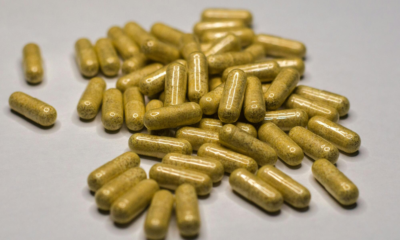Waking up and catching a glimpse of tired eyes in the mirror can feel frustrating. Those stubborn shadows under the eyes have a way of making someone look exhausted, even after a full night of sleep. It’s a common concern that affects countless people, regardless of age or lifestyle.
For many, dark circles aren’t just a cosmetic worry. They can be tied to deeper issues like genetics, skin health, or even overall well-being. This makes the search for lasting solutions more complicated than it first seems. Creams and concealers may help in the short term, but most people long for something more permanent.
That’s where understanding the root causes becomes important. Before exploring treatment options for dark eye circles in Singapore, it helps to first understand why these shadows appear. With a clearer picture of the causes, you can choose an approach that offers a longer-lasting solution.
The Role of Genetics
Some people are simply born with a higher chance of developing dark circles. This doesn’t necessarily mean there’s anything “wrong,” but certain inherited traits can make them more visible.
Family Influence
One of the strongest contributors is family history. If parents or grandparents struggled with visible circles under their eyes, chances are the same pattern may appear in future generations. This usually happens because of inherited traits like thinner skin or higher natural pigmentation around the eyes. These are factors creams alone can rarely erase.
Skin Thickness
The skin under the eyes is already delicate, but for some, it is especially thin. When this happens, blood vessels show through much more easily. Instead of actual discoloration, what people often see is just a greater visibility of underlying structures. This can create a bluish or purplish tone that lingers no matter how well-rested someone may be.
Pigmentation
Another factor is natural pigmentation. Some people may have hyperpigmentation passed down from their family lineage. This type of dark circle comes not from lack of sleep, but from increased melanin in the skin under the eyes. This form is often harder to correct with surface-level products because the color itself is deeper within the skin’s layers.
Lifestyle and Health Factors
Beyond genetics, daily habits and overall health also play a big role. Sometimes, the choices people make without realizing it can slowly create or worsen the appearance of dark circles.
Rest and Recovery
Lack of proper rest often intensifies dark circles. When the body doesn’t get enough quality sleep, blood vessels under the skin dilate, making discoloration more noticeable. Even worse, poor sleep may cause fluid retention that creates puffiness. Together, this combination can make shadows under the eyes appear deeper and harder to hide.
Nutrition and Hydration
Dietary habits also impact how the under-eye area looks. Too much salt can cause fluid retention, while dehydration leaves the skin looking dull and less resilient. On the other hand, a balanced diet rich in vitamins and antioxidants helps keep the area brighter and healthier. Foods with vitamin C and iron, for example, support skin vitality and circulation.
Stress and Lifestyle Habits
Stress often shows on the face, and dark circles are no exception. High stress interferes with quality sleep and can even weaken the skin barrier over time. Other habits like smoking or excessive alcohol add to the strain on skin health. These choices deplete the body’s ability to repair and maintain elasticity, leaving the under-eye area dull and shadowed.
Moving Toward Lasting Solutions
Understanding both genetics and lifestyle factors provides clarity on where to focus. While no single method works for everyone, recognizing the underlying cause makes it easier to choose treatments that actually last.
For those who find that home remedies and surface-level creams don’t bring lasting results, professional help may be worth considering. Options such as specialized dermatological treatments, laser therapy, or fillers are often used in clinics as longer-term solutions. Each approach addresses a different cause, whether it’s pigmentation, thinning skin, or visible blood vessels.
Permanent improvement usually takes a mix of healthy daily choices and professional guidance. By becoming aware of what contributes most to dark circles, anyone can start making decisions that work for their unique skin. With the right balance of care, lifestyle adjustments, and, when needed, expert treatments, brighter and more refreshed eyes are truly possible.

 News3 months ago
News3 months ago
 Health2 years ago
Health2 years ago
 Technology2 years ago
Technology2 years ago
 Celebrity2 years ago
Celebrity2 years ago





















